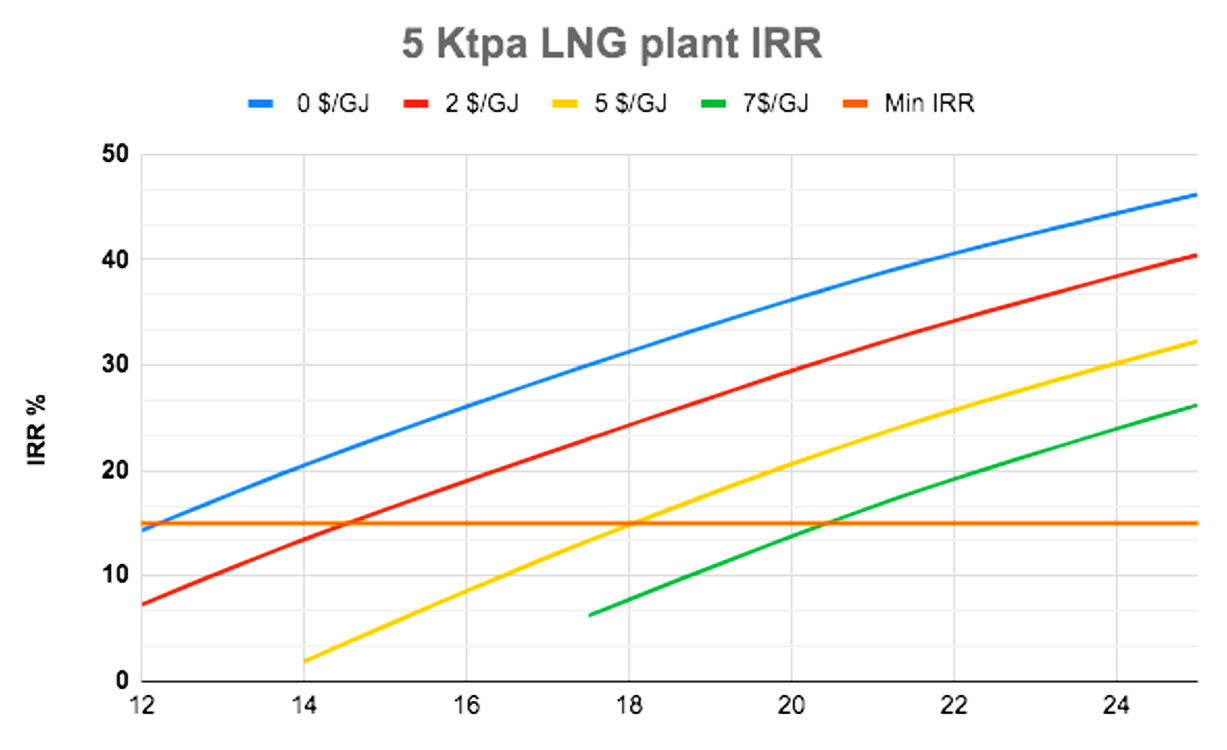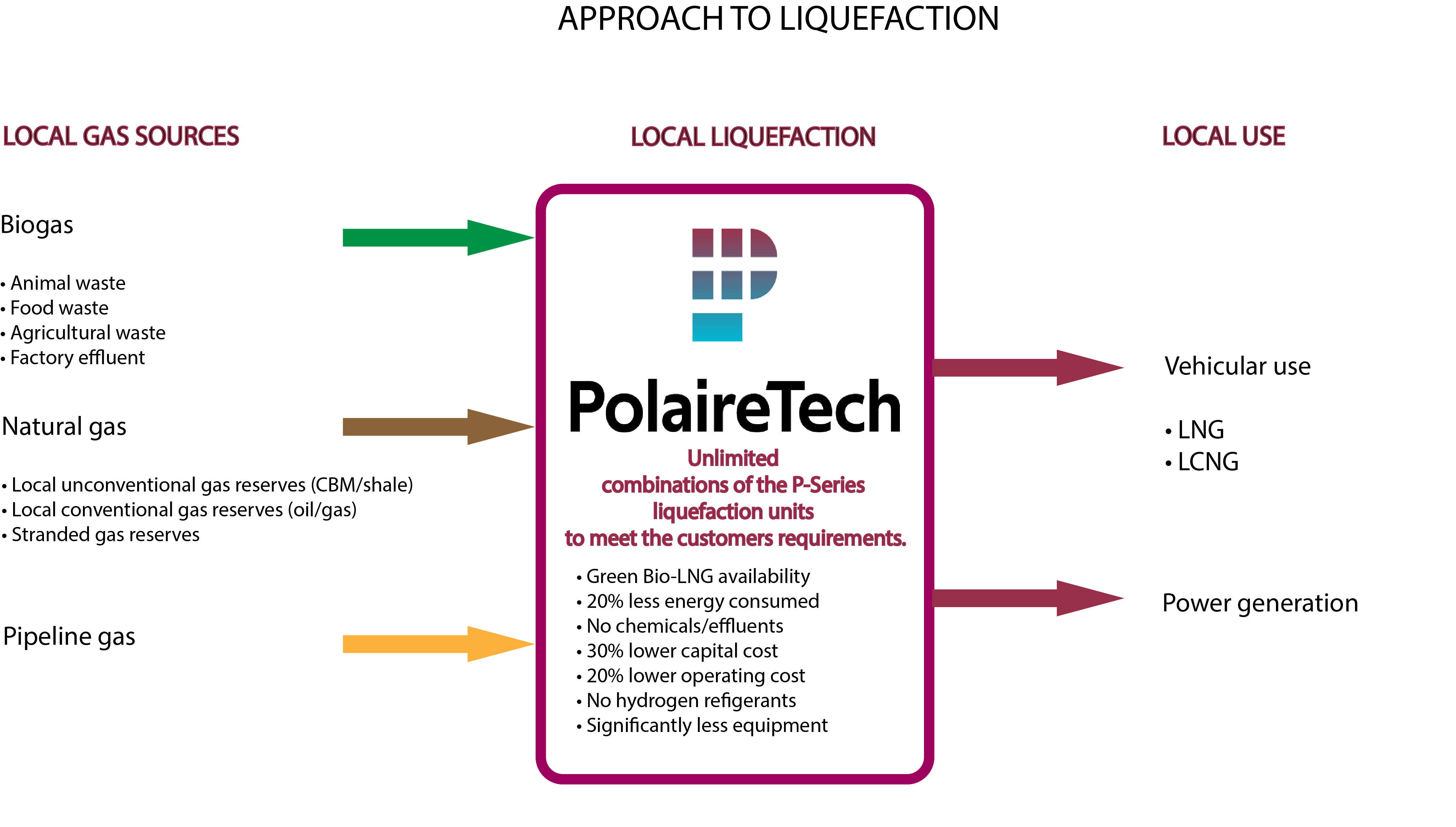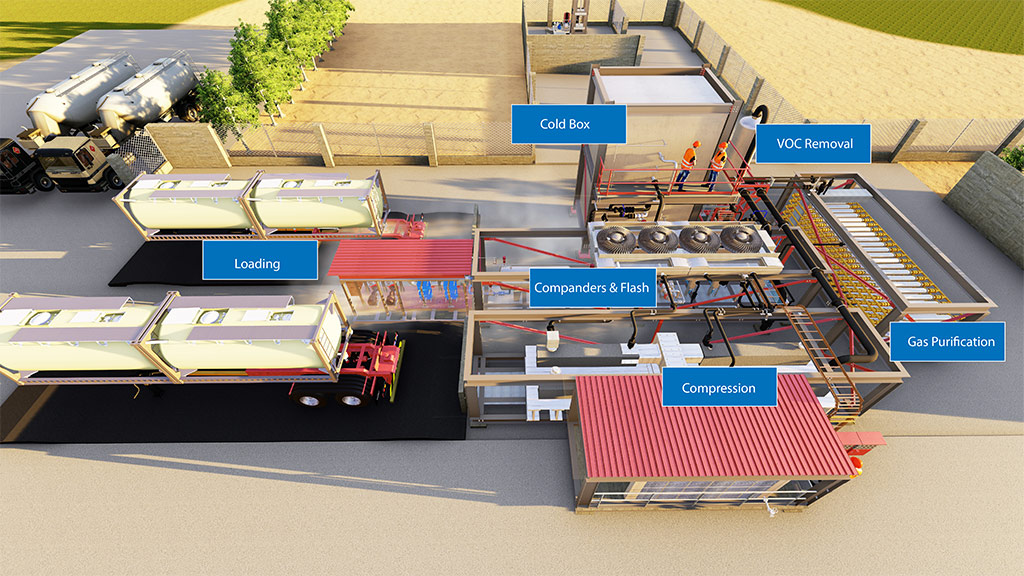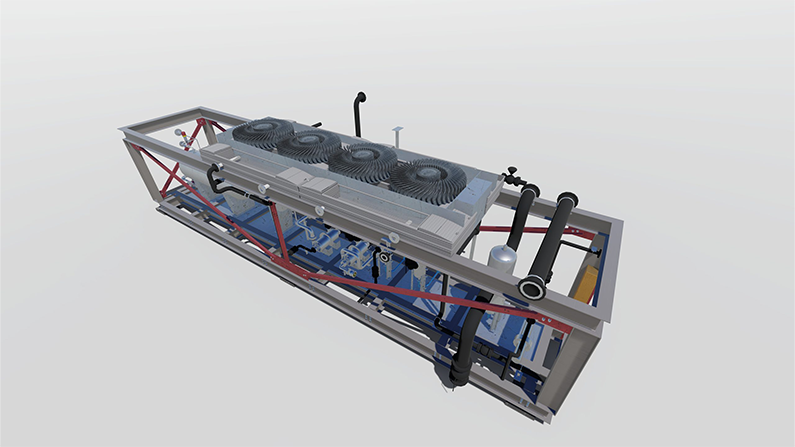The major competitive advantage of these small plants, when compared to the large-scale plants, is that the smaller local gas resources are monetized, taking advantage of the reduced logistics cost of transporting liquid LNG over large distances to the end-users”.
Liquefied natural gas (LNG) has been around for decades and the usage is expanding globally. There are many large-scale LNG plants (> 1 mtpa) that are currently in design development phases through to full operating plants. These large-scale LNG plants are located by the water near a port. The LNG is typically transported to other countries by LNG tankers or ships, regasified, with the natural gas then transported via pipeline or truck to inland users. A new concept that has been developing over the last ten years is the use of small-scale (< 500 ktpa) LNG plants. The global small-scale LNG market is expected to grow from USD 31.30 billion in 2019 to USD 53.03 billion by 2027, according to Fior Market Research. [1]
Small-scale LNG plants are typically located inland where natural gas is available from biogas, “stranded” unconventional and conventional gas resources or a natural gas pipeline. The LNG has been trucked for use by power generators and more recently been used in the heavy transportation markets including trucking, mining haul trucks, marine and rail. These small and micro-scale standardized modular plants can be built faster and more efficiently than large-scale LNG plants. The major competitive advantage of these small plants when compared to the large-scale plants are that the smaller local gas resources are monetized, taking advantage of the reduced logistics cost of transporting liquid LNG over large distances to the end users.
Small and micro-scale plants are becoming more popular globally due to the initiatives to reduce greenhouse gases as LNG burns more cleanly than other fossil fuels such as petroleum and coal (reducing CO2 emission between 30% – 50%). The below graph illustrates the comparison of C02 emissions between different fuels.

There are different liquification technologies that have been used for small-scale LNG plants that include methane expansion, nitrogen (N2) refrigeration and single mixed refrigerant (SMR). There needs to be innovative cost-effective methods to construct these plants and ensure the customer has a profitable “total cost of ownership”. PolaireTech has developed a standard modular small P60 (60 ktpa) and micro P5 (5 ktpa) scale LNG plants utilizing Gasconsult’s zero refrigerant (methane expansion) ZR-LNGTM technology. Compared to competing refrigerant cycles, ZR-LNGTM technology eliminates refrigerant storage and transfer systems, which in turn, reduces the overall lifecycle costs by 30% when compared to traditional technologies. This is accomplished by minimizing the quantity of equipment which reduces overall CAPEX and OPEX costs and reduces the power consumption by 20%. The below graph shows the different LNG technologies and the power consumption for each. As you can see, the power consumption for our patent ZR-LNGTM technology is much lower than the other technologies.

The following graph illustrates the IRR for our 5 ktpa standard modular plant based on Pipeline gas @ 30 Bar in South Africa with different prices based on availability:

LNG Selling Price $/GJ
Our plant design consists of standard plug-and-play modules utilizing the ZR-LNGTMtechnology that can be interchanged depending on the FEED sources. These plants are also scalable depending on the customers’ requirements. Below is a graphic that details our total solution for small and micro-scale LNG plants.

The patented ZR-LNG (Zero Refrigerant LNG) process is highly differentiated as the liquefaction process uses no external refrigerants. The process uses the natural gas feed as the refrigerant medium in an optimized system of expanders. Compared with most mixed refrigerant cycles the power required is lower, and zero refrigerant eliminates the need for refrigerant import storage and blending, reducing the equipment count, capital cost and space requirement. The absence of liquid hydrocarbon refrigerant makes for a safer operating environment and operation in a remote location simpler. Compared with nitrogen cycles, the power required is also lower due to the higher cycle efficiency, and there is no need to import make-up nitrogen, reducing operating cost. Also there is a facility to remove benzene in the liquefaction process. A simplified process schematic is provided below:

We designed the LNG plant to have inland shippable modules that can be easily transported to and within any country. The micro-scale P5 LNG plant is designed to fit into standard iso-container frames and in most countries, are easily transportable without having to carry any permits. The small-scale P60 LNG plant is designed to fit in a standard module frame that requires minimal transportation permits within most countries. The site will need minimal groundwork and if required, the modules can be easily relocated to a different site as the wellfield development continues. Below is a graphic illustrating our liquification module for our micro-scale LNG plant:

The LNG plant consists of the following plug and play modules or vendor packages and is illustrated in the below graphic for the P5 plant:
- VOC removal (if required)
- Gas compression
- Membrane purification and polishing module
- Cold Box
- Liquification (Companders and flash) module
- Iso-container loading module

PolaireTech plug and play module methodology is an innovative solution to small and micro-scale LNG and there are lifecycle benefits of utilizing a zero-refrigerant technology versus the traditional N2 and SMR technologies. PolaireTech P5 and P60 plants provide the reduction of overall lifecycle costs that ensure the customers “total cost of ownership” is met.
The following is a summary of PolaireTech’s modular plant that offers additional advantages over conventional process schemes:
- No refrigerant storage and transfer systems
- No make-up refrigerants required
- No additional chemicals required (zero-chemical)
- No waste aqueous streams
- Continuous process
- Feed gas flexibility
- Operational simplicity
- Lower power demand
- Capital cost savings
- Energy efficient liquefaction process
- Efficient nitrogen removal
- Shorter implementation schedules
PolaireTech’s modular P5 and P60 LNG plants are the right fit for companies looking for innovative solutions and would like to have a positive return on investment on their future projects. If you would like more information about PolareTech’s innovative solution for micro and small-scale LNG, please contact PolaireTech at info@polairetech.com or visit our website www.polairetech.com.
Sources
- Small-Scale LNG Market by Type, https://www.fiormarkets.com/report/small-scale-lng-market-by-type-regasification-liquefaction-application-418652.html
- S. Energy Information Administration – EIA, https://www.eia.gov/tools/faqs/faq.php?id=73&t=11
- Technical and economic optimization of expander-based small-scale natural gas liquefaction processes with absorption precooling cycle, University of Groningen, Zhang, Jinrui; Meerman, Hans; Benders, René; Faaij, André, Technical and economic optimization of expander-based small-scale natural gas liquefaction processes with absorption precooling cycle (rug.nl)

